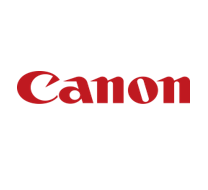$KDP (+0,51 %)
$7751 (-0,81 %)
$NXPI (+0,9 %)
$WM (+0,01 %)
$CDNS (+0,14 %)
$BN (+0,4 %)
$SOFI (-0,41 %)
$UNH (-0,97 %)
$AMT (+0,35 %)
$UPS (+0,33 %)
$BNP (-0,54 %)
$NVS (+0,66 %)
$DB1 (+0,75 %)
$MSCI (-0,43 %)
$ENPH (+1,3 %)
$BKNG (+3,43 %)
$LOGN (-0,98 %)
$V (+1,42 %)
$MDLZ (-1,15 %)
$PYPL (+1,02 %)
$000660
$MBG (+2,05 %)
$BAS (+1,5 %)
$UBSG (+4,71 %)
$SAN (+0,29 %)
$CVS (-1,39 %)
$OTLY (-2,11 %)
$GSK (-0,79 %)
$ETSY (+2,07 %)
$CAT (+0,78 %)
$KHC (-0,99 %)
$ADYEN (+1,2 %)
$ADS (+1,76 %)
$AIR (-0,31 %)
$SBUX (-0,14 %)
$CMG (-0,72 %)
$META (+1,48 %)
$KLAC (+0,96 %)
$MELI (-3,29 %)
$WOLF (-2,06 %)
$GOOGL (+0,87 %)
$EQIX (+2,02 %)
$MSFT (+0,36 %)
$CVNA (+0,49 %)
$EBAY (+0,33 %)
$005930
$6752 (-1,17 %)
$KOG (+0,46 %)
$VOW3 (+1,45 %)
$GLE (-1,1 %)
$LHA (+0,2 %)
$STLAM (+2,01 %)
$SPGI (+0,32 %)
$MA (+0,4 %)
$PUM (+0,21 %)
$AIXA (+2,08 %)
$FSLR (+0,17 %)
$AAPL (-0,29 %)
$REDDIT (-0 %)
$AMZN (+0,3 %)
$NET (-1,66 %)
$MSTR (-4,21 %)
$GDDY (-0,9 %)
$TWLO (+1,46 %)
$COIN (-1,52 %)
$066570
$CL (+0,07 %)
$ABBV (-1,02 %)
$XOM (-0,23 %)

Canon
Price
Debate sobre 7751
Puestos
6Quarterly figures 27.10-31.10.25



ASML NV: The best technology company in Europe- The brains behind every smart chip
Introduction
ASML Holding N.V., a Dutch company based in Veldhoven, is the world's leading supplier of lithography systems for the semiconductor industry.
Historical development
The history of $ASML (-0,65 %) is characterized by impressive growth and equally remarkable resilience. The only $PHIA (+1,67 %) spin-off, after a steep upward trend, suffered a severe setback with the bursting of the dotcom bubble in 2001, but recovered in 2002. A strategically important step was the acquisition of BRION in 2007, which allowed ASML to significantly optimize its chip manufacturing process and essentially grow into what it is today.
Business model and core competencies
ASML's business model rests on three main pillars:
1. sale of machines
2. service and maintenance contracts
3. software solutions and upgrades for existing systems
The company's expertise centers on the development and manufacture of highly complex lithography systems, in particular extreme ultraviolet lithography (EUV), which is considered the technological heart of modern semiconductor production.
Market position and competition
ASML holds a dominant market position and controls an estimated 80 to 90 percent of the global market for lithography systems. This strong position gives the company a significant influence on the technological development of the entire semiconductor industry.
The remaining 10 to 20 percent of the market is accounted for by the $7731 (+0,23 %) and $7751 (-0,81 %) which are considered ASML's main competitors in the field of lithography systems. However, both companies have lost considerable market share in recent years and currently pose no serious threat to ASML's dominant position. Indirect competition $AMAT (-0,09 %) are occasionally mentioned as potential competitors, but their business models do not directly overlap with ASML's and therefore do not represent direct competition.
Future prospects and strategic initiatives
Innovation remains the key to success for ASML. The company is committed to the continuous development of EUV technology, which is crucial for the production of ever more powerful and smaller chips. Special attention is paid to promoting technological breakthroughs that will set new standards for the industry. To achieve this, ASML is represented with its own sites in all major markets - including the Netherlands, China, Taiwan, Germany, the USA and Japan.
Total Addressable Market (TAM)
The total addressable market for ASML is enormous, as the company counts almost all major chip manufacturers worldwide among its customers. In view of advancing digitalization and the growing demand for advanced semiconductors in various industries, the market potential for ASML is likely to increase further in the coming years.
Share performance
With a market capitalization of 267.92 billion euros, ASML is currently the most valuable technology company in Europe and one of the ten most important players in the industry worldwide. Since the spin-off from Philips and the IPO on April 17, 1995, the share has achieved an impressive return of 63,670.29% - a development that Philips could certainly have used. In the last three years, however, ASML has recorded a total return of -3.32% and has thus clearly lagged behind the general market trend.
For the development (company figures), a better view and more, check out the free blog : https://topicswithhead.beehiiv.com/p/asml-nv-das-beste-technologie-unternehmen-europas-der-kopf-hinter-jedem-chip
Conclusion
ASML is an outstanding company, the likes of which we rarely see in Europe. With a strong growth trend, an almost monopolistic market position and excellent margins, the company is rightly where it is today. ASML has clearly left the competition behind and continues to invest around 15% of its turnover in research and development to secure this position. ASML is also strengthening its own supply chain through targeted investments in companies that offer strategic security advantages. One example of this is Carl Zeiss SMT GmbH, which is unfortunately not listed on the stock exchange.
Despite all these strengths, one should also be cautious: The China risk is considerable, as ambitious "copycats" are striving to build their own "ASML". Nevertheless, it is an excellent company that is worth investing in - but you should not get carried away by the hype. In my opinion, an entry should only be made at prices of up to EUR 700 or preferably in the EUR 580 to 650 range. Anyone who sees these prices should think carefully about why they should not buy in.

What data did you use to arrive at your starting price?
About non-fried chips, unknown tech gems and why Nvidia alone is worth nothing - Overview Semiconductor Stocks
The rise of $NVDA (-0,35 %) and other tech stocks, more and more investors have been drawn into the semiconductor industry in recent months and years. However, due to the enormous size and complexity of the industry, it is not easy to keep track of who is contributing to the global market now and how, and which stocks could outperform the market in the future.
1) What is the semiconductor industry doing?
The semiconductor industry basically manufactures microchips as an end product, which consist of millions and millions of tiny switches. These products have become an integral part of our lives and can be found everywhere. Examples include the data centers of $GOOGL (+0,87 %) smartphones from $AAPL (-0,29 %) , drives and inverters from $TSLA (+0,26 %) or $SIE (+1,15 %) or in the systems of $UKW (-0,88 %) . But also toothbrushes, ATM cards, passports, watches, lamps, and and and...
2) But the best microchips are made by $NVDA (-0,35 %) ?
Yes, in the area of graphics processors... If you look at the Semicondutor Top100, many well-known names appear: $AVGO (+2,71 %) and $QCOM (+0,46 %) for communication, $AMD (+0,85 %) and $INTC (+1,98 %) for processors for PCs, $TXN (+1,54 %) and $STM for discrete components, $IFX (+2,96 %) and $NXPI (+0,9 %) systems for the automotive industry and security solutions and many more...
3) Aren't the manufacturers taking market share away from each other?
No, because each company specializes in its own field and is the world market leader in one area. You can think of it like the automobile industry: Lamborghini makes sports cars, Landrover makes jeeps... Could Landrover make sports cars? Sure. Would they be good? If enough money and time is invested, certainly. Would that make sense? Probably less. And that is precisely where the value of semiconductor manufacturers lies. As the products themselves are highly complex, the know-how has to be built up over decades. The development is associated with extremely high costs and project durations from idea to mass production are rarely less than 3-4 years. That is why it would not make sense for e.g. $NVDA (-0,35 %) would not make sense to enter the power sector, as established players with a head start of many years have already established themselves there.
4) How are microchips built now?
Many steps are required to manufacture microchips. The engineers at the semiconductor manufacturers develop the circuits for the final products. As the structure sizes are in the nano-meter range, they have to rely on simulation environments such as $CDNS (+0,14 %) or $SNPS (+0,41 %) simulation environments. Once the engineers have developed and checked everything (a non-existent first-time-right costs many millions!), the data is sent to the fabs. Depending on the manufacturer, the in-house ($005930 , $STM , $IFX (+2,96 %) ) or, as in the case of e.g. $NVDA (-0,35 %) external. In other words, Nvidia itself only develops the "schematics" for projects, the final product comes, for example, from $TSM (+0,6 %) or $GFS (+2,91 %) . These fabs take orders from many different manufacturers and produce the products in close coordination with the manufacturers millions and billions of times...
5) How do the fabs produce the microchips?
As complex as the microchips are, the production itself is just as complex. In order to be able to create structures of just a few nanometers, clean rooms are required that are many times cleaner than operating theatres. These cleanrooms are now home to machines from $ASML (-0,65 %) , $AMAT (-0,09 %) or $7751 (-0,81 %) . These machines now manufacture 24h on the basis of various semiconductor materials such as from $ATS (-2,59 %) or $WOLF the finished products. These are sent back to the manufacturers, checked (in a first phase manually by the engineers with products from e.g: $KEYS (+0,09 %) , later fully automatically with e.g. $TEK ) and then sold. Here again there are intermediaries such as $SMCI,
$SIE (+1,15 %) or $AAPL (-0,29 %) who buy finished microchips and process them for larger products. Interesting here: Apple, for example, develops many things itself, but buys know-how and products from other companies because the entire development would be far too complex. In other words, semiconductors from many different manufacturers can be found in Apple products or other products - so there is also a great deal of interdependence, depending on the core competence.
6) What will be NVIDIA's No. 1 pursuer?
Hard to say. As described, the entire semiconductor industry is very closely linked. Different companies will benefit from the global trends. Be it the companies in the first row (manufacturers) as well as those in the second and third (fabs, suppliers, software, end customers,...) The interdependence results in enormous opportunities for many companies but also many risks - for example, if Taiwan is attacked $NVDA (-0,35 %) with production of $TSM (+0,6 %) (not just Nvidia but virtually the entire industry) and the market shifts completely.
Addons:
- No guarantee of completeness or correctness, the entire industry is very extensive.
- If you are interested in this sector: A very good explanation of the entire process can be found at https://www.youtube.com/watch?v=_Kj58yQ67KI . Here it also becomes clear once again how large the sales figures (and thus also the risks of the companies) must be for the R&D and production costs to pay off. Remember the project durations here - who knows what will be important in 5 years?
$7751 (-0,81 %) I would like to have your opinion on this :) am still quite new here so I would be happy about an exchange
"The Japanese electronics company Canon is getting deeper into the semiconductor competition with a new machine to make the most advanced chips."
#exchangetradedeveryday
Stock exchange company in the scrap yard !
My father and I run a scrap yard with 14 employees.
We are more or less like the Ludolfs... only in a professional way.
In my l200 pickup from $8058 (-0,49 %) it goes then first on our depot.
In the office then the computer and monitor of $6702 (-1,41 %) turned on and $MSFT (+0,36 %) started. For my daily computing tasks, I am supported by my calculator from $6753 (+4,29 %)
Since we are also controlled in contrast to German authorities we lead a digital bookkeeping. Via my scanner from$7751 (-0,81 %) all receipts that still come with the $DPW (-0,36 %) are digitized.
Since we are in charge of 2 large stamping productions and a lot of manufacturing business, we of course need a corresponding fleet of vehicles.
Two trucks from$8TRA (+1,97 %) and one from $DTG (+0,04 %) are constantly in use for us. The bodies from $PAL (+1,37 %) work quite well most of the time ... but unfortunately the quality is disappointing more often.
The phone rings... $TKA (+2,14 %) calls the container at their production site must be changed because otherwise the machines stand still ... The construction site of $HOT (-1,6 %) must also be finished soon.
Over my $AAPL (-0,29 %) Iphone I am constantly available for my customers. How was it with self-employed ? Self and constantly.
Next call. Scrap metal that we sent by truck to the export warehouse was refused for the time being. The radioactive measuring system of $TMO (-0,46 %) has failed. This will be another expensive operation.
We have more great machines, but unfortunately they are not from companies listed on the stock exchange.
Our fleet includes 3 Sennebogen handling excavators and a Lindemann scrap shear.
With the scrap shear we are able to press different types of scrap and bring it to a certain size to make it suitable for charging.
This scrap is then delivered directly by us to steel mills.
And even in the scrap trade, one encounters numerous exchange-traded companies on a daily basis.
Valores en tendencia
Principales creadores de la semana









